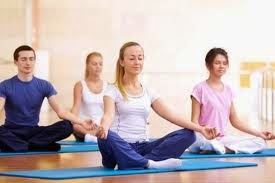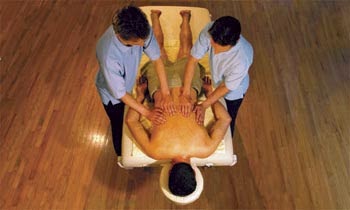Top 10 Ayurvedic
Digestion Tips
Katie White RMT,
HTP, CYT
According to the
Canadian Digestive Health Foundation, more
than 20 million Canadians suffer from digestive disorders every year. Millions of dollars are spent each year on
laxatives, heart burn pills, antacids and probiotics. We are bombarded with an overwhelming amount
of dietary information and often misinformation through media, books and
internet.
It is difficult to navigate
through the array of diet plans: vegetarian, vegan, raw food, Paleolithic diet,
Mediterranean diet and many
more. There is no one eating plan that
fits every single person as we are unique in our constitutions. We spend so much time focusing on what we
eat but not how we are eating it.
This is where Ayurvedic
principles can help each and every one of us.
Ayurvedic medicine -- also known as Ayurveda
-- is one of the world's oldest holistic (whole-body) healing systems. It was
developed thousands of years ago in India and is still practiced today.
It is based on the belief that health and
wellness depend on a delicate balance between the mind, body, and spirit. The
primary focus of Ayurvedic medicine is to promote and maintain good
health. This is done through diet,
herbs, massage, exercise and relaxation techniques.
Ayurveda suggests for optimal digestion and assimilation
of our food, we must become more mindful of how we are eating. Changing the way we approach our food can
really affect gas, bloating and indigestion.
Practice these mindful guidelines to
strengthen your digestive fire:
·
Eat three meals per day at the same time each
day. This will train the body to expect
food at the same time each day and will be more prepared to digest it. It is also advisable to eat enough food at
each meal to discourage snacking between meals.
·
Eat without distractions! Turn off computers,
televisions and avoid reading and driving.
When we focus on our food and experience it fully, we will eat less food
and feel full longer. By following this
one guideline, it is possible to lose weight easily.
·
Chew eat mouthful thoroughly and eat at a
moderate pace. This enables the digestive process by making the food particles
smaller and allowing digestive enzymes to be released with salvia.
·
Sit down to eat in a clean and beautiful
environment. Be thankful for your food
and experience a feeling of gratitude.
·
Only eat when hungry and never when upset or
angry.
·
Avoid drinking cold beverages with meals as this
dampens the digestive fire.
·
Stimulate digestion 15 minutes before meals by
eating ginger slices with lemon squeezed on top. The salivary glands will begin
producing enzymes before you begin your meal.
·
Make lunch your biggest meal between 12:00-2:00
pm. This is when the digestive fire is the strongest.
·
Eat a light dinner, no later than 8:00 pm. Our bodies are designed to detoxify while
sleeping and undigested food will interfere with this process. The results are inflammation, joint soreness
and difficulty waking up in the morning.
·
* Reduce or eliminate processed foods. Experiment with seasonal foods and include
all six tastes with every meal. This
will ensure a variety of vitamins and minerals are included daily to optimize
health.
·
“Without
proper diet, medicine is of no use. With proper diet, medicine is of no
need"- ancient Ayurvedic proverb
Katie is the owner of Courtenay Massage Therapy and
can be reached at (250) 897 0069. She is a Registered Massage Therapist,
Healing Touch Practitioner, Chartered Herbalist, Soma Yoga Instructor and currently
pursuing designation as an Ayurvedic Yoga Therapist. Katie has been practicing
the healing arts for over 15 years, helping people reduce pain and stress.
Using bodywork, movement therapy, energy medicine, aromatherapy and routines of
daily living, she educates people on mind/body/spirit connection.
www.courtenaymassagetherapy.com


.jpg)





.jpg)


.jpg)
.jpg)
.jpg)



